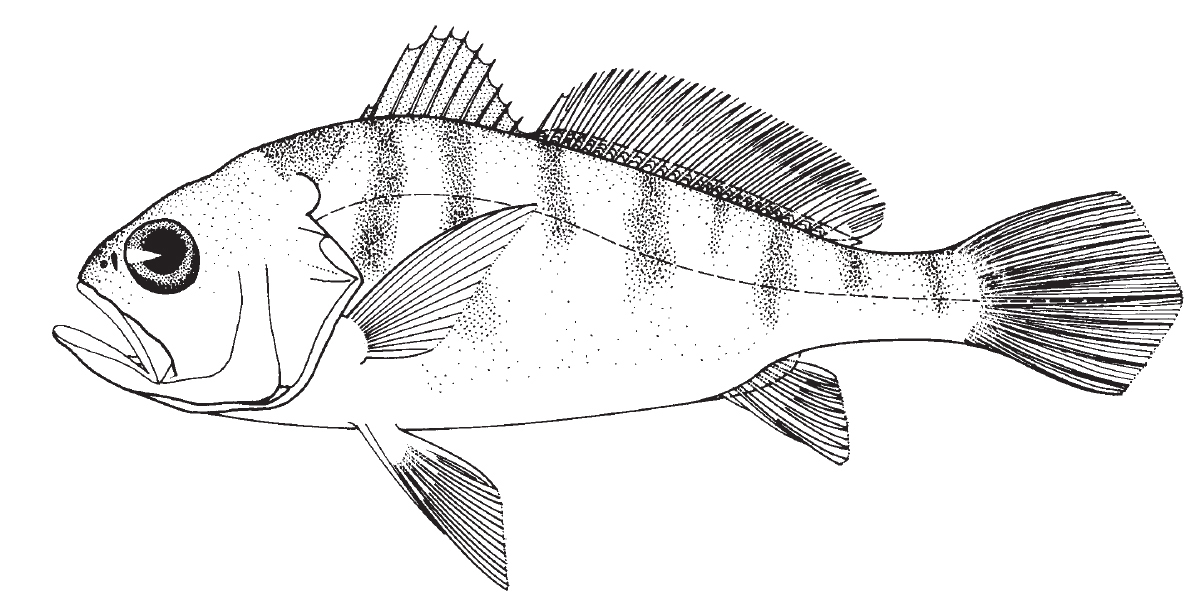Banded Drum - Larimus fasciatus
*Information from FAO Species Identification Guide Western Central Atlantic*

Size
Maximum 22 cm; common to 15 cm.
|
Diagnostic characters
A moderately small fish, body short and robust. Mouth large, strongly oblique, lower jaw projecting; maxilla reaching beyond middle of eye. Teeth very small and pointed, set in 1 or 2 rows along edges of jaws.Chin without barbels, but with 4 minute pores;snout with 5 marginal pores and no rostral pores. Gill rakers 34 to 36, very long and slender, on first arch. Preopercular margin smooth.Spinous
dorsal fin with 10 spines, posterior portion with 1 spine and 24 to 27 soft rays; anal fin with 2 spines and 6 or 7 soft rays, second spine long and stout; caudal fin rounded in adults. Gas bladder simple, carrot-shaped, without anterior appendages. Sagitta (large earstone) short but very thick, lapillus (small earstone) rudimentary. Scales large, ctenoid (comb-like) on body and head, except before and below eyes. Colour: greyish olive above, silvery white below; back with 7 to 9 rather conspicuous dark vertical bars; inside of opercle dark; lower parts of pelvic fins, anal and caudal fins yellowish.
|
Habitat, biology, and fisheries
Found over
mud and sandymud bottoms in coastal waters to
about 60 m, not common in estuaries. Feeds
mainly on small shrimps. Caught mainly with bottom
trawls; occasionally with seines and pound
nets. No special fishery but common in trawl
bycatch from the shrimp grounds in the Gulf of
Mexico. Not marketed for human consumption;
used mostly for bait.
|
Distribution
Northern coast of the Gulf of Mexico
and Atlantic coast of the USA from south
Florida to Massachusetts.
|